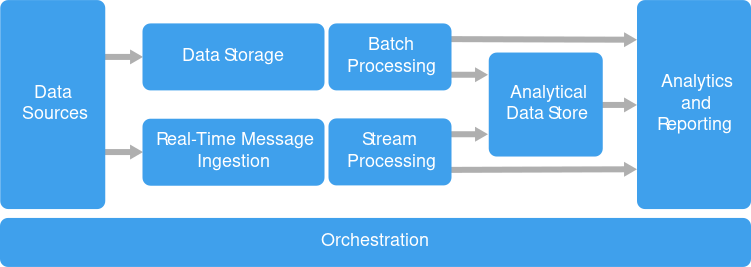The goal of data architecture is to ensure that an organisation's data is organised, structured, and stored in a way that supports the organization's business goals and objectives. This includes ensuring that the data is accurate, consistent, and accessible to those who need it.
There are several components that make up a data architecture, including:
- Data sources: These are the sources of data that feed into the system, such as transactional databases, log files, and sensor data.
- Data ingestion: This is the process of extracting data from the sources and transforming it into a format that can be stored and processed.
- Data storage: This is where the data is stored and managed, such as in a data warehouse or a data lake.
- Data processing: This is the process of transforming and analyzing the data to extract insights and create value. This can include batch processing, stream processing, and real-time processing.
- Data visualization: This is the process of presenting the data in a visual format, such as charts and graphs, to make it easier to understand and interpret.
Effective data architecture is essential for supporting data-driven decision making and enabling organisations to derive value from their data. It is a complex field that requires a combination of technical expertise and business knowledge.

Big data framework versus data architecture
Big data frameworks and data architecture are two separate but related concepts.
Big data frameworks are software platforms that are designed to process and analyse large amounts of data, often in real-time. These frameworks typically include tools for data ingestion, storage, processing, and visualisation, as well as libraries for machine learning and other advanced analytics. Examples of big data frameworks include Hadoop, Spark, and Flink.
Data architecture, on the other hand, refers to the overall design and organization of a system for managing and storing data. It includes both technical and logical components, such as data sources, storage systems, and processing pipelines, as well as the policies and procedures for managing and using the data.
In general, a big data framework is a tool that is used to build and operate a data architecture. A data architecture provides the overall structure and organisation for a system, while a big data framework provides the tools and technologies needed to process and analyse the data within that structure.

